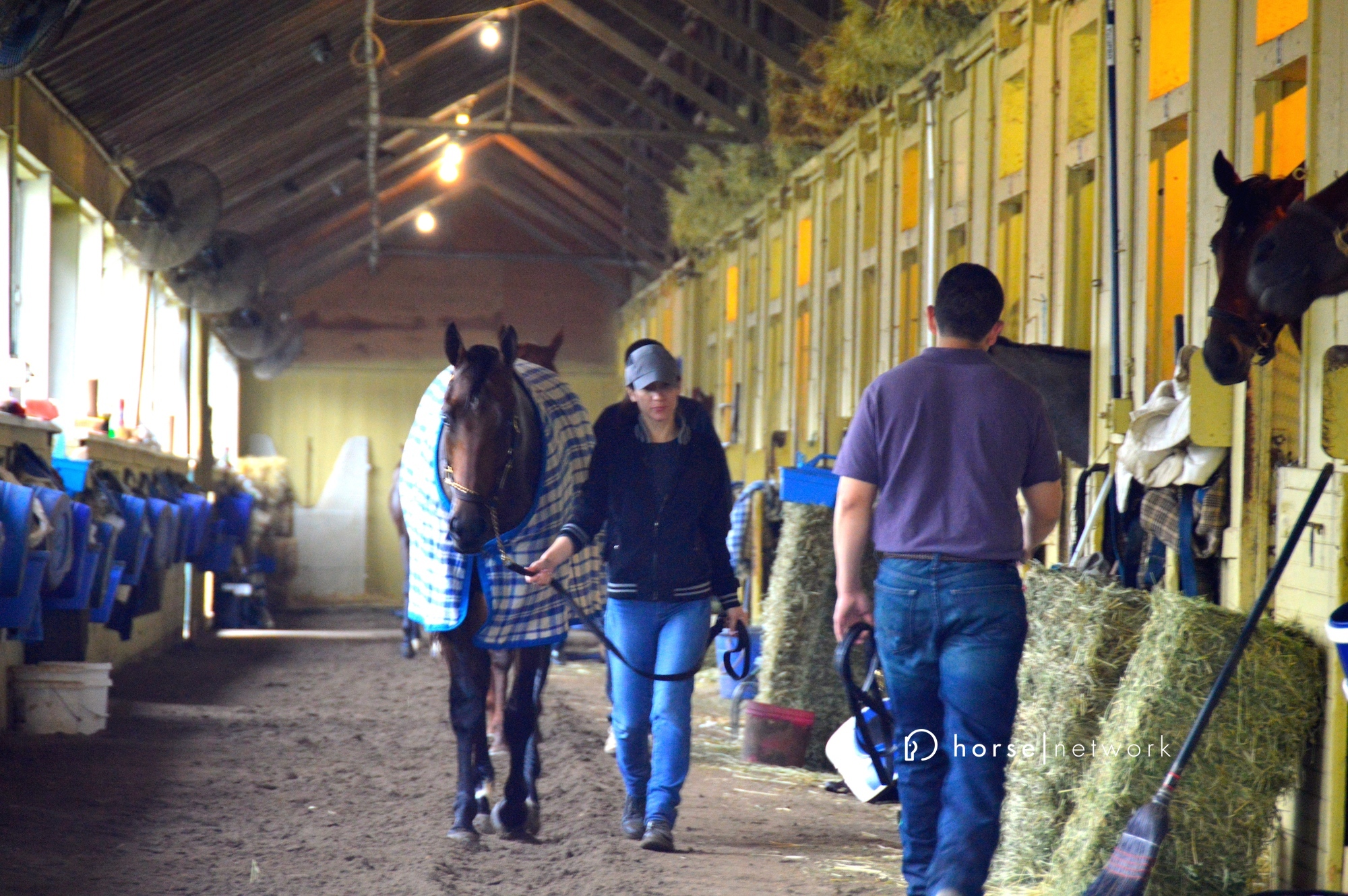On almost every OTTB forum or article you’ll find an opinion about when to start transitioning a newly retired racehorse into a sport horse.
“I give my horses at least 6 months of turn out to let down from the track,” many people say. Or, “No OTTB should be ridden right of the track without a year of letdown to just be a horse!”
The thinking seems to be that they’ll relax, “forget being a racehorse” or somehow become a better riding horse with a few weeks—or months—of pasture letdown.
Why is this? Do thoroughbreds really need it? Does your horse benefit, or, do you? Where did this theory start and does it truly help? My thought is no, it does not help in the least.

NOTE: In cases where the OTTB is recovering from injury or illness, or if his body is simply sore from an intense racing campaign, then there certainly is a reason for letting him down. It’s highly unfair to the horse to put him right back to work if he truly needs recovery time to be physically and mentally fit for his new career. (A chiropractic adjustment, dental exam, etc., are great ways to start as well.)
On a perfectly healthy horse I believe it is the rider who benefits from the time off, not the horse (did I wake a few of you up with that statement?) In my experience, I think the real reason people often insist on letdown is for the benefit of their own personal confidence in getting on a racehorse. Many people, deep down inside, are afraid; afraid of their own (lack of) ability, self-confidence, and what they’ve come to believe about thoroughbred racehorses needing that R&R “forget” life on the track. I am here to tell you it won’t happen!
Think about it: horses learn via memory, both good and bad. Once they are exposed to track life, albeit for a short time, they do not forget it; they cannot be “untaught” what they know but they can learn more.

While on the track, your new OTTB was used to steady exercise six days a week with plenty of hand walking on off days. He’s received daily grooming, attention to his feet, regular bathing and healthy quantities of high quality concentrates and forage. Turning him out in a large paddock with minimal attention is doing him no favors whatsoever, as he has grown extremely accustomed to attention and human interaction.
In all the years that I’ve owned OTTBs and placed several dozen more, I have found the most impactful change in enabling the transition process is diet modification. While racing, your horse was fed large amounts of concentrates with a high sugar and starch content. Trainers want their runners “hot” and exploding with energy. Additionally, their significant workload burns a ton of calories. Not so much when transitioning to the show world. I recommend a feed as low as you can find in sugars and starches (preferably pelleted, as many times they contain way less sugars than a textured feed), and higher in fat content, with a protein in the +/- 12% range. The higher fat is a great source of fuel without the spikes and drops in blood sugar that the sugars and starches impart. I believe you’ll see a difference in a couple weeks on this new diet.
Gut health supplements are another excellent product for horses just off the track (I prefer Ramard’s Total Gut Health). Many OTTBs have ulcer issues and a few months of this product has worked wonders for me.
If you still insist on a letdown period, I suggest keeping your horse in some type of work several days a week. I am not talking about hours of mindless lunging in circles, either. That only accomplishes two things: boredom (for both of you) and an ever increasing level of fitness for your horse.
Instead, consider spending time doing ground work, double lunging (2 lines) and ground driving. An accomplished trainer with long lining can teach a horse dressage movements up through Grand Prix from the ground. Think how much easier it would be training these basics from the ground before you ever get on.
My daughter is currently transitioning an FEI driving horse to ridden dressage. She has taught him to move away from the tiniest touch of her finger tip on either side, exactly where your heel or spur would touch when riding. She can make him back up, step after step, just by touching the middle of his chest with her index finger. He will walk in a wash rack, turn 180 degrees and stand waiting to be cross tied when she twirls her index finger in a circle. If a Dutch horse can learn, a thoroughbred certainly can as well.

Training like this can pay huge dividends, as a polite horse that’s easy to handle immeasurably improves any horseman’s life. The bond and trust between you and your partner will leap forward and you’ll be comfortable knowing you’re getting the very best out of your new OTTB.
All content is for informational purposes only. Contact a local professional if you have any questions regarding the health or training of your animals.
About the Author
Bill Kraatz is a licensed FEI official in the disciplines of Combined Driving, Eventing, and Dressage. His first love is the OTTB and he currently owns an FEI level Combined Driving Horse.


 December 1, 2016
December 1, 2016 
























